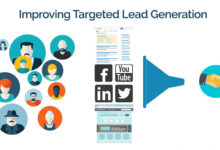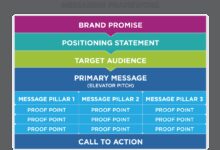Leads Definition: 7 Powerful Insights You Must Know
Ever wonder what exactly a ‘lead’ is in the world of marketing and sales? It’s more than just a name on a list—it’s the starting point of every successful business relationship. Let’s break down the real leads definition and why it matters.
Leads Definition: The Core Concept Explained

At its heart, the leads definition refers to a person or organization that has shown interest in your product or service. This interest could come from filling out a form, subscribing to a newsletter, or engaging with your content. A lead is not yet a customer, but they are a potential one.
What Exactly Is a Lead?
A lead is any individual who has provided contact information and demonstrated some level of interest in what your business offers. This could be as simple as downloading a free eBook or attending a webinar. The key is that they’ve taken an action that signals openness to further communication.
- A lead is not a customer—yet.
- Leads can come from various channels: social media, websites, events, etc.
- They are the starting point of the sales funnel.
“A lead is the first handshake in a potential business relationship.” — MarketingProfs
Why Understanding the Leads Definition Matters
Without a clear grasp of what constitutes a lead, businesses risk misallocating resources. For example, treating every website visitor as a qualified lead can waste time and effort. Knowing the leads definition helps teams focus on quality over quantity.
- Improves targeting accuracy.
- Enhances conversion rate optimization.
- Supports better CRM strategies.
For deeper insights, check out HubSpot’s guide on leads.
Types of Leads Based on the Leads Definition
Not all leads are created equal. The leads definition evolves depending on the stage of engagement. Understanding the different types helps businesses prioritize efforts and tailor messaging accordingly.
Marketing Qualified Leads (MQLs)
These are leads that marketing teams identify as more likely to become customers based on engagement behaviors. Examples include downloading a whitepaper, attending a demo, or spending significant time on pricing pages.
- Scored using lead scoring models.
- Not yet ready for direct sales contact.
- Focused on nurturing through email campaigns.
Learn more about MQLs at MarketingProfs.
Sales Qualified Leads (SQLs)
SQLs are leads that have been vetted by both marketing and sales teams and are deemed ready for direct outreach. They’ve shown intent to purchase, such as requesting a quote or scheduling a consultation.
- Have clear buying intent.
- Meet specific criteria like budget, authority, need, and timeline (BANT).
- Passed from marketing to sales for conversion.
“An SQL is a lead that sales won’t waste time on—they’re ready to talk.” — Salesforce Blog
Product Qualified Leads (PQLs)
Common in SaaS and tech companies, PQLs are users who have experienced the product (often through a free trial or freemium model) and shown behaviors indicating readiness to upgrade.
- Tracked via in-app behavior (e.g., feature usage, login frequency).
- High conversion potential due to firsthand experience.
- Often nurtured with targeted in-app messages.
Read how companies use PQLs at Pardot.
How the Leads Definition Applies Across Industries
The interpretation of a lead varies significantly across sectors. While the core idea remains the same—someone interested in your offering—the way leads are generated and qualified differs.
Real Estate: Leads as Prospective Buyers
In real estate, a lead might be someone who inquired about a property listing, attended an open house, or signed up for market updates. These leads are often cold at first but can warm up with consistent follow-up.
- Generated via online listings, referrals, and ads.
- Qualified by budget, location preference, and urgency.
- Nurtured with property alerts and virtual tours.
“In real estate, a lead is only as good as the agent’s follow-up strategy.” — National Association of Realtors
E-commerce: Leads as Email Subscribers
For online stores, a lead is often someone who opts in for a discount or signs up for product updates. These leads may not have purchased yet, but they’ve given permission to be marketed to.
- Collected through pop-ups, checkout forms, and social media.
- Segmented by interest (e.g., fashion, electronics).
- Converted via personalized product recommendations.
Explore e-commerce lead strategies at Shopify Blog.
B2B Services: Leads as Decision-Makers
In B2B, leads are often professionals or executives who could influence purchasing decisions. These leads are typically generated through content marketing, webinars, or LinkedIn outreach.
- Focused on solving business problems.
- Require longer nurturing cycles.
- Qualified using frameworks like BANT or CHAMP.
Leads Definition vs. Contact: What’s the Difference?
Many people confuse leads with contacts, but they’re not the same. A contact is anyone in your database, while a lead is a contact who has expressed interest in your offering.
Key Distinctions Between Leads and Contacts
A contact might be someone you met at a conference but never followed up with. A lead, however, has taken a measurable action—like downloading a brochure or requesting a demo.
- All leads are contacts, but not all contacts are leads.
- Leads have a defined source and behavior trail.
- Contacts may lack engagement data.
“A contact is a name. A lead is a conversation waiting to happen.” — HubSpot
When Does a Contact Become a Lead?
The transition happens when a contact performs an action that indicates interest. This could be clicking a CTA, attending a webinar, or filling out a contact form. Automation tools can track these behaviors and flag them as lead-generating events.
- Action-based triggers define lead status.
- CRM systems automate the classification.
- Marketing automation nurtures the relationship.
Learn how CRMs handle this at Zoho CRM.
Leads Definition in the Digital Marketing Funnel
The digital marketing funnel illustrates how leads move from awareness to conversion. Understanding where a lead sits in this funnel helps determine the right strategy.
Top of Funnel (TOFU): Generating Awareness Leads
At this stage, leads are just becoming aware of a problem or solution. They might search for information, read blog posts, or watch explainer videos. The goal is to capture their attention and collect basic info.
- Content types: blogs, social media, SEO, videos.
- CTAs: download guides, subscribe, follow.
- Lead magnets: free tools, checklists, webinars.
“TOFU leads aren’t ready to buy—they’re ready to learn.” — Neil Patel
Middle of Funnel (MOFU): Nurturing Consideration Leads
These leads have identified a need and are evaluating solutions. They might compare products, read case studies, or request demos. This is where personalized content and email sequences come into play.
- Content types: comparison charts, testimonials, product tours.
- CTAs: schedule a call, start a trial, get a quote.
- Nurturing tools: drip campaigns, retargeting ads.
See how to nurture MOFU leads at Campaign Monitor.
Bottom of Funnel (BOFU): Converting Decision Leads
BOFU leads are ready to buy. They’ve narrowed their options and are looking for final reassurance. This is where sales teams take over with personalized offers, discounts, or consultations.
- Content types: pricing pages, contracts, live demos.
- CTAs: buy now, sign up, book a call.
- Conversion tactics: limited-time offers, testimonials, guarantees.
Leads Definition and Lead Scoring: How to Prioritize
Not all leads deserve equal attention. Lead scoring assigns values to leads based on their behavior and profile, helping teams focus on the most promising ones.
Behavioral Scoring: Tracking Actions
This method evaluates what a lead does—like visiting pricing pages, opening emails, or clicking links. Each action adds points to their score.
- High-value actions: demo requests, quote submissions.
- Medium-value: webinar attendance, whitepaper downloads.
- Low-value: blog reads, social likes.
“Behavior tells you what the lead wants. Demographics tell you who they are.” — Marketo
Demographic Scoring: Assessing Fit
This looks at who the lead is—job title, company size, industry, location. A perfect demographic match gets a higher score, even if their behavior is minimal.
- High-fit: decision-makers in target industries.
- Medium-fit: influencers or mid-level staff.
- Low-fit: students, competitors, irrelevant sectors.
Discover lead scoring best practices at Marketo.
Leads Definition in CRM Systems
Customer Relationship Management (CRM) platforms are essential for managing leads. They store data, track interactions, and automate workflows based on the leads definition.
How CRMs Capture and Classify Leads
CRMs integrate with websites, forms, and ads to automatically collect lead data. Once captured, they classify leads based on source, behavior, and score.
- Automated lead capture via web forms and APIs.
- Tagging by campaign, channel, and geography.
- Routing to the right sales rep or team.
“A CRM turns raw leads into actionable opportunities.” — Salesforce
Automation and Lead Nurturing in CRMs
Modern CRMs don’t just store data—they act on it. Automated workflows send follow-up emails, assign tasks, and escalate high-scoring leads.
- Email sequences triggered by lead behavior.
- Task reminders for sales reps.
- Escalation rules for hot leads.
Explore CRM automation at Zendesk.
Common Mistakes in Applying the Leads Definition
Even experienced marketers make errors when defining and handling leads. Avoiding these pitfalls can dramatically improve conversion rates.
Overvaluing Quantity Over Quality
Chasing high lead volume without assessing quality leads to wasted effort. A thousand unqualified leads are less valuable than ten sales-ready ones.
- Focus on conversion rates, not just lead count.
- Use lead scoring to filter noise.
- Align marketing and sales on lead criteria.
“More leads don’t mean more sales. Better leads do.” — Forbes
Ignoring Lead Source and Context
Not all lead sources are equal. A lead from a paid ad may behave differently than one from a referral. Ignoring source context can lead to poor targeting.
- Track performance by channel (organic, paid, social).
- Adjust nurturing based on acquisition method.
- Optimize budgets toward high-converting sources.
Failing to Nurture Cold Leads
Many leads aren’t ready to buy immediately. Without nurturing, they go cold. Automated email sequences and retargeting can keep your brand top-of-mind.
- Use drip campaigns to educate over time.
- Re-engage with special offers or new content.
- Segment lists for personalized messaging.
Learn nurturing strategies at ActiveCampaign.
What is the basic leads definition?
The leads definition refers to any individual or organization that has shown interest in your product or service by providing contact information or engaging with your content. They are potential customers in the early stages of the buying journey.
What’s the difference between a lead and a prospect?
A lead is anyone who has shown initial interest, while a prospect is a qualified lead that has been vetted and is actively being pursued by the sales team. Prospects have higher intent and fit specific criteria.
How do you generate high-quality leads?
Focus on targeted content, clear CTAs, and valuable lead magnets. Use lead scoring to prioritize, and align marketing with sales to ensure only qualified leads move forward.
What role does CRM play in managing leads?
CRM systems capture, organize, and track leads throughout the sales funnel. They enable automation, lead scoring, and personalized communication, improving efficiency and conversion rates.
Can a lead become inactive? How do you re-engage them?
Yes, leads can go cold if not nurtured. Re-engage them with personalized emails, special offers, or new content that addresses their pain points and reignites interest.
Understanding the leads definition is crucial for any business aiming to grow its customer base. From identifying different types of leads to leveraging CRM tools and avoiding common mistakes, a clear strategy enhances conversion and ROI. Whether you’re in e-commerce, real estate, or B2B services, mastering the leads definition empowers smarter marketing and sales decisions.
leads definition – Leads definition menjadi aspek penting yang dibahas di sini.
Further Reading:



